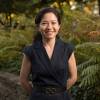When The Skating Club of Boston opened its new, cutting-edge $68 million facility in Norwood last September, it wasn’t exactly what executive director Doug Zeghibe had imagined for the end of the 10-year process of creating the club’s new home.
“We opened in the pandemic,” he said. “It was a quiet opening, which is not what we anticipated.”
The club's new facility has just about everything a figure skater could want, and Zeghibe hopes it will be a hub for future generations of skaters and athletes on their way to the Olympic Games. Its delayed grand opening celebration this weekend will welcome a roster of renowned skaters to the ice to entertain and inspire skaters, as well as mark the beginning of the club's new era.
That christening will come Saturday as the club hosts “A Night of Stars.” The event will feature an all-star cast of skaters, including Scott Hamilton, who won an Olympic gold medal in 1984 and whose Scott Hamilton CARES Foundation will benefit from the event. Olympic gold medalist Tenley E. Albright — the namesake of the Norwood facility's centerpiece 2,500-seat Tenley E. Albright Performance Center — said she thinks the festivities will bring more Olympians under one roof than any place besides the Olympics.
Albright, who was first U.S. woman to win the World Figure Skating Championships (1953) and a gold medal in figure skating at the Winter Olympic Games (1956), told GBH News that she’s always considered The Skating Club of Boston to be her skating home. She called the club’s new facility a model for other skating facilities to emulate.
“I feel as if it’s a dream come true, but I don’t think I would have had the daring to dream something like this,” she said.
With what is now one of the best figure skating facilities in the country, Zeghibe’s hope is that future Olympians will come from the ice in Norwood.
“I believe we’ve just built the new launching pad for Olympians,” he said. “It will take some time. We’ve got kids training here now that will be competing in Nashville in January where the Olympic team will be chosen and they have a shot. Each quadrennial it’s just gonna get stronger and stronger and stronger. Not only from kids that develop here in Boston starting in our learn to skate programs, but for kids who move here. So we have kids from Dallas, from California, from Colorado, from Florida, New York that are moving here to train in this facility and with our coaches. And that’s really what you do when you become one of the national training centers in the United States.”
The Norwood complex includes three rinks, two of which are built specifically for figure skating — something of a rarity in the skating world — which means no boards or lines on the ice like in a hockey rink. The high-altitude room is designed to help athletes prepare for competitions in Denver or elsewhere high above sea level. And, at 180,000 square feet, the facility is almost six times as big as the club’s last facility on Soldiers Field Road in Brighton, where it had been since 1938.
Part of the challenge when it came to building the massive new complex was simply finding the land to build on.
“And as our real estate broker said, you can’t build a refrigerated Costco in the city of Boston,” Zeghibe said.
But maybe an equally large challenge was finding a community that understood the club’s mission. At most rinks in this region, ice time is primarily reserved for hockey.
Zeghibe compares ice time to oil in the Middle East because it’s always in demand. Making matters more complicated is the lack of rinks built with the focus on figure skaters, despite the prevalance of the sport across the country. Zeghibe said there are 750 figure skating clubs in the country that are members of US Figure Skating. But just three of them, including The Skating Club of Boston, own their own rink.
“Boston’s a big hockey town,” Zeghibe said. “So most towns understood skating as hockey. And Norwood absolutely understood The Skating Club of Boston is a figure skating institution. So it made the decision to move to Norwood easy once we found the land.”
Like any other sport, figure skating takes time to perfect. Zeghibe said skaters at the Norwood complex don't have to worry about whether they’ll have the ice time required to do that. And, according to Zeghibe, most of the skaters who come to the club have their eyes on the Olympics.
One of those hopefuls is Jimmy Ma. He moved in October of last year to train in Norwood and is gearing up for the U.S. Figure Skating Championships in Nashville in January.
He said in most of the country, everything is hockey-centric.
“The business revolves around hockey and how much hockey can bring in,” he said. “But here it’s different, it’s quite flipped.”
Not having to worry about the logistics of ice time means elite skaters like Ma can focus more on their craft, which may also benefit skaters at other levels.
“And obviously when us high-level athletes are quite content, it trickles down to the mid-tier and the younger kids, everybody gets motivated,” he said. “You know, they see us and we’re dead focused on training and they see that and they’re like, ‘Oh, one day we could get to that point.’”







